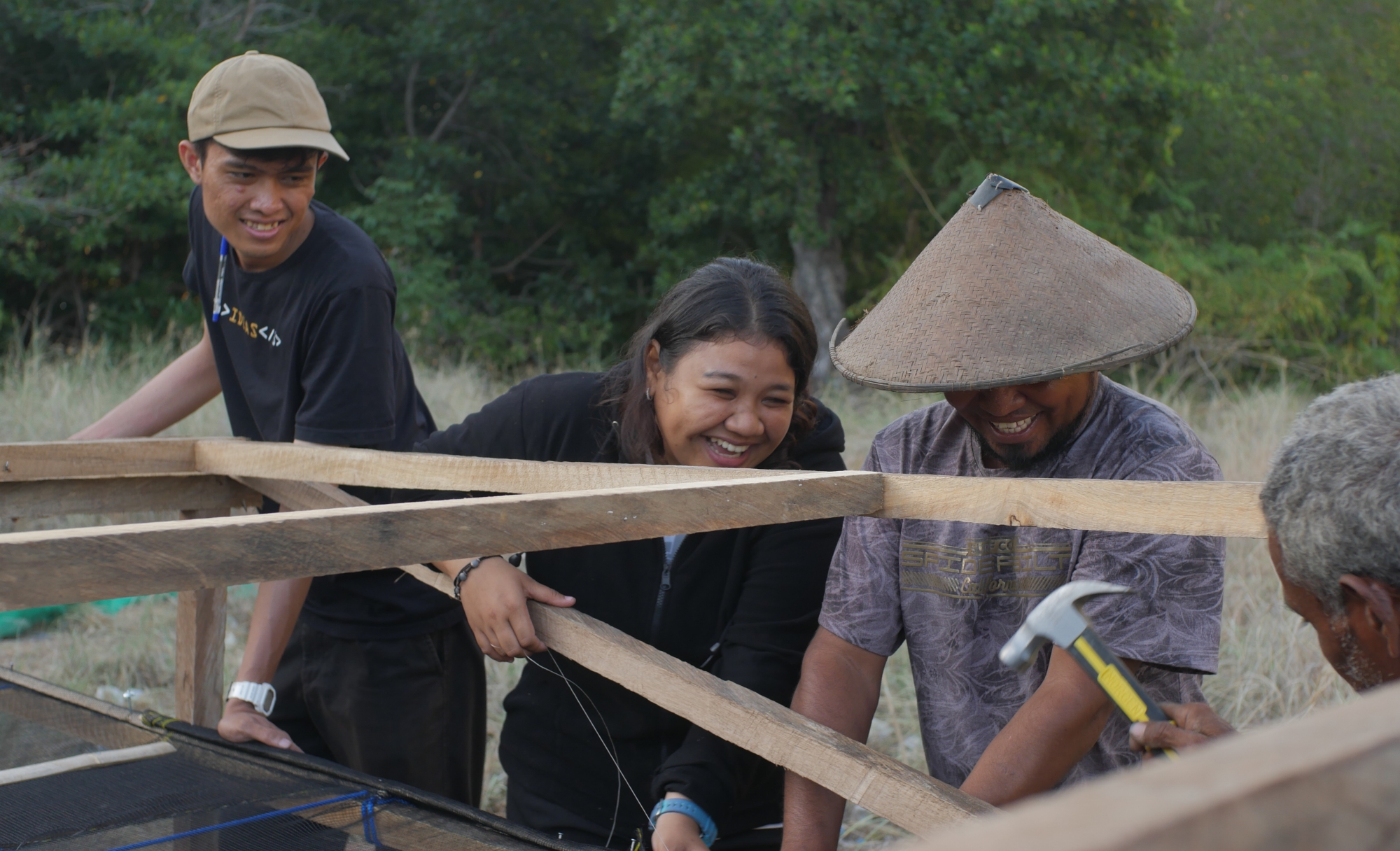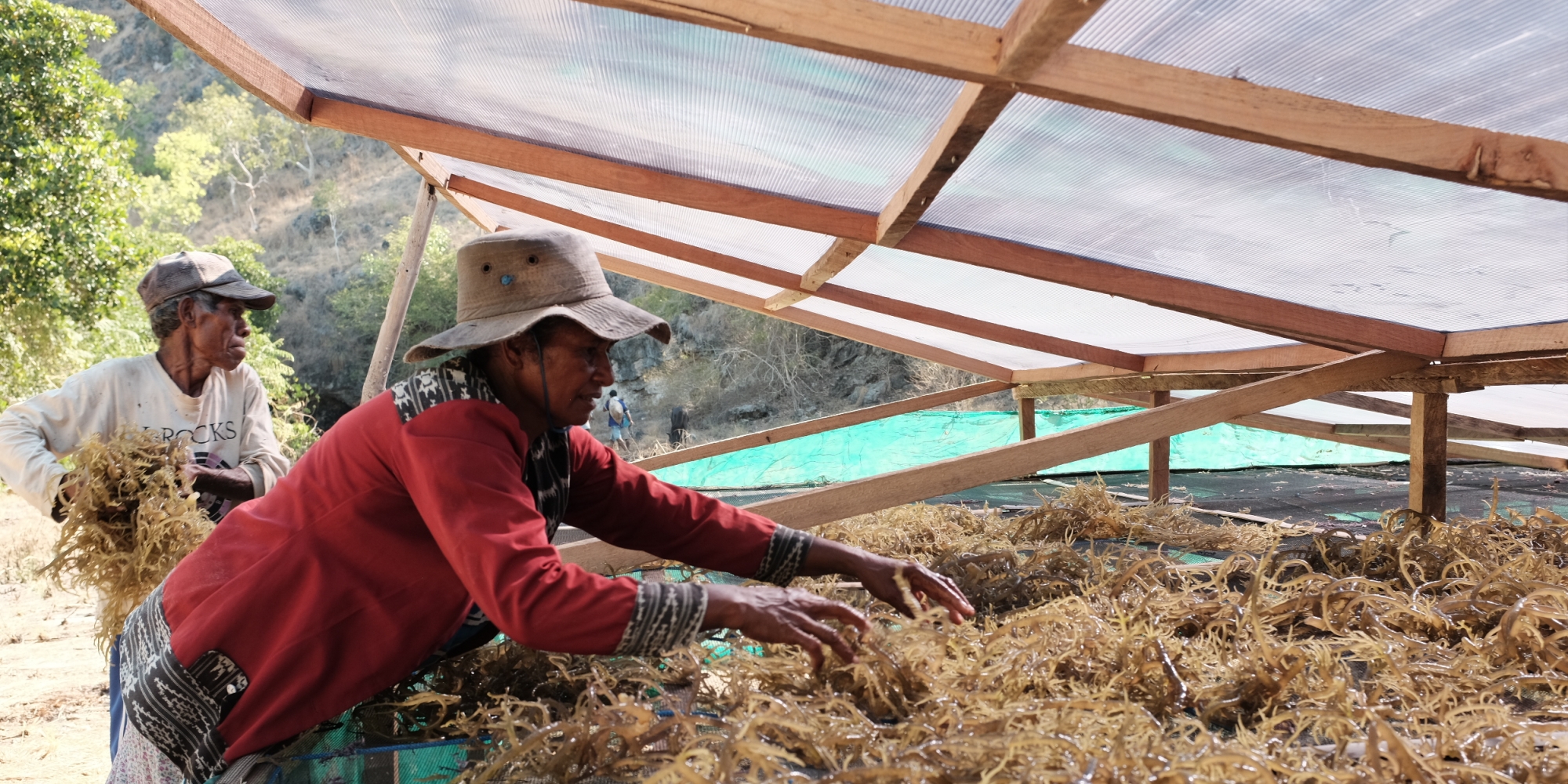In 2016, Kopernik’s Unmet Needs research determined that ineffective crop drying techniques are one of the major challenges faced by Indonesia’s agriculture sector, causing an estimated economic loss of almost US$3 million. Many farmers in Indonesia still employ the conventional crop drying techniques by drying crops under the sun. This process leads to inconsistent drying, is sometimes unhygienic, and can take many weeks to complete.
A potential solution to these challenges is the use of solar dryers.

The second iteration of the K-solar dryer for farmers in Adonara island, East Nusa Tenggara in 2017.
A solar dryer is an agricultural device which removes moisture from wet crops using heat, while providing protection against pests. As identified in the Unmet Needs 2016 research, various models of solar dryers are already available commercially. But with an average cost of $2,550, the technology is not accessible for smallholder farmers in rural and remote areas. The first solar dryer prototype was developed by our team in 2016. Since then, Kopernik has been improving and testing a number of iterations for smallholder farmers - including one specifically designed for seaweed - and we have also published a manual on how to build a solar dryer.
Solutions Lab Senior Analyst Cok Suryanata building a seaweed solar dryer with farmers in Lembata.
We recently caught up with Kopernik’s Senior Analyst Cok Suryanata who has been conducting experiments to develop practical drying solutions for smallholder farmers in Bali and with seaweed farmers in Lembata, East Nusa Tenggara.
Where are we right now with the development of the K-solar dryer?
Cok: We are constantly improving and iterating the design. In the latest development, we are working on two designs. One specifically focusing on cacao and similar cash crop commodities. This model of the dryer is currently being built in Bali, Papua, and West Kalimantan. Another model is for seaweed farmers in Lembata.
We started from co-designing with communities, understanding the capacity needs, understanding the topography of where we would build the solar dryer. For instance, the solar dryer in Lembata was built fully from wood and bamboo because there is no electricity to construct the solar dryer in the area using other materials. Whereas the one in Tabanan and in Kalimantan, we were able to use different construction materials because the area had better access to electricity.
What are the key differences between the seaweed solar dryer and the solar dryer for other commodities (the K-solar dryer)?
Cok: The case for the seaweed solar dryer and why it’s so different comes down to the nature of the commodity itself. The K-solar dryer design can also be used to dry other commodities such as coffee, sorghum, and different types of grains. But grains are, in nature, different from seaweed which is wet and very heavy. We thought that it would not be appropriate to use the K-solar dryer design because it used small trays whereas seaweed required a larger space.
The way people load seaweed into the dryer is also different to the way people load cacao. So seeing the different ways people interact with the commodity and the nature of the commodity itself, those are the main factors on why we decided to make a different design.
Farmers in Lembata, East Nusa Tenggara using the seaweed solar dryer.
The latest prototype of the seaweed solar dryer has since been replicated by other groups. How did you feel when you heard about the replication?
Cok: The first replication occurred in Lembata in late August 2019, literally several days after we built the first one. We were really excited to hear when they welcomed the idea so quickly.
With the new seaweed solar dryer design, we utilized the concept of a modular design. Essentially, this means that farmers can build the solar dryer without having to know specific measurements. Instead we use a basic framework with ratio and proportions to encourage them to build something that is suited to their needs. For example, the distance between the pillars compared with the width and length of the structure can be adjusted depending on the required capacity of the dryer.
We also provided the seaweed farmers with a simple manual instead of complex technical drawings. We tried to communicate with them by showing them how to build the solar dryer. As we build the solar dryer collaboratively, they began to understand first hand how to build it and how the solar dryer functioned.
What have been the biggest insights or lessons gained during the process?
Cok: For the solar dryer, I think one of the most interesting lessons for us is that it teaches us to not seek for the most high tech, most efficient, most profitable design. Rather we should focus on what the communities already have available to them and what we can build upon by using those assets and resources. By supporting what the communities need and by elevating what is already used, we could create more meaningful designs, meaningful solutions.
It has been a really good lesson for me personally to work with the community and to understand what the needs are.




